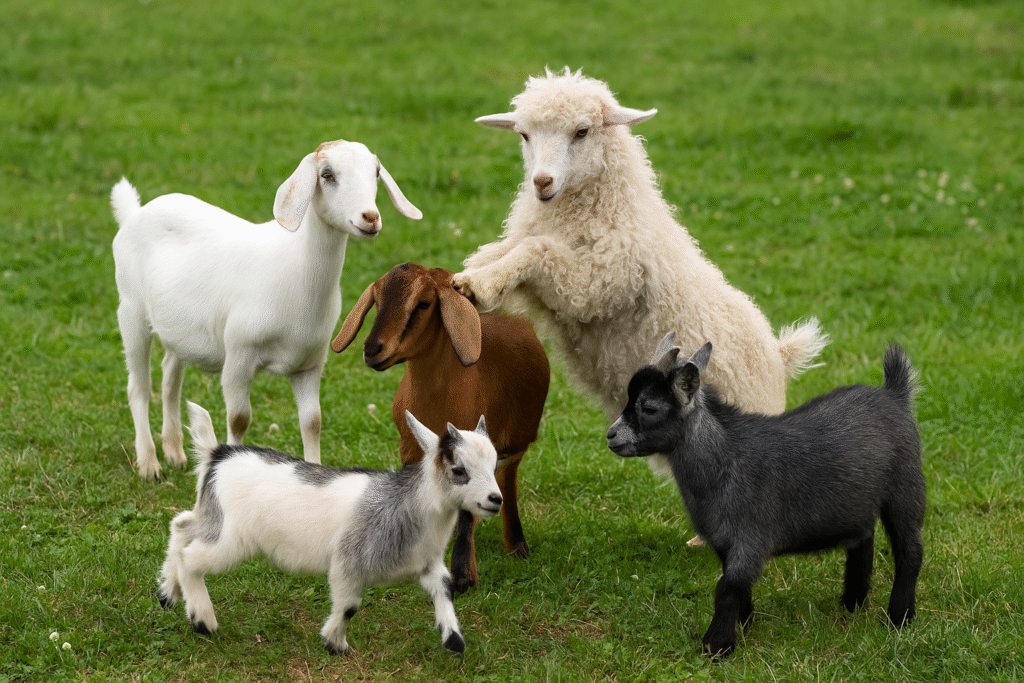
Goat Breeds Explained: Which Goat Is Right for You?
Imagine this: you’re standing at the edge of a paddock, or maybe just leaning on the fence of your small suburban backyard, thinking about what kind of animals might fit into your life. Chickens? Too noisy for the neighbors. Sheep? Maybe a bit too big and not as interactive. Then your mind drifts to goats. They’re charming, mischievous, endlessly entertaining, and—depending on the breed—can give you meat, milk, fiber, or just companionship.
But here’s the catch: not all goats are the same. Some are built like athletes, some are ready to fill your freezer with meat. Some are like dairy queens, brimming with creamy milk. Others are living fluff balls that grow coats fit for spinning and weaving. And then there are the little ones—the kind that make perfect backyard pets with as much personality as a dog.
So the question becomes: which goat is right for you?
To answer that, let’s take a journey through the world of goats, meeting each type as if we were walking through a bustling country fair, each breed showing off its talents, quirks, and challenges. By the end, you’ll not only know your Boers from your Pygoras—you’ll know which ones could belong in your story.
Why Goats?
Goats are the ultimate multi-purpose animal. For thousands of years, they’ve followed humans into every climate, from desert villages to snowy mountains. They’re small enough to handle without heavy equipment, hardy enough to adapt, and versatile enough to fit nearly any purpose.Not to mention they eat most things that grow.
For the homesteader, goats are a gateway animal—easier to manage than cattle, but offering more than chickens. For the urban dweller, certain breeds are small enough to be manageable in a backyard, providing milk or companionship in places you’d never expect.
Of course, it’s not all sunshine and bleating. Goats are escape artists. They’ll test your fences daily, nibble on your laundry if you leave it out, and occasionally lead you on wild goat chases through the neighborhood. They require proper care—hoof trimming, worming, vet visits—and they eat more than just “weeds.”
Still, their charm is irresistible. And if you match the right breed to your goals, they can be one of the most rewarding animals you’ll ever keep.
Meeting the Meat Goats
Let’s start with the heavyweights—the goats raised primarily for meat. Picture walking into a livestock show, and here they come, thick-muscled and strutting with purpose.
The Boer Goat: The Bodybuilder
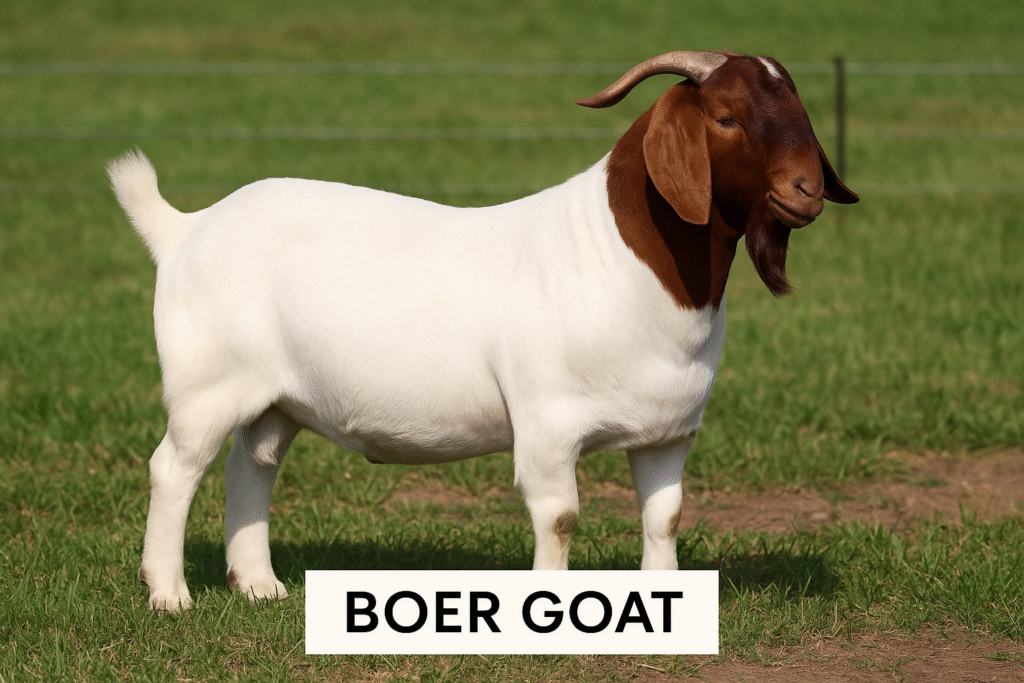
If goats were athletes, the Boer goat would be the bodybuilder of the group. Originating in South Africa, Boers are stocky, muscular, and built for growth. With their distinctive white bodies and brown heads, they’re easily recognized.
Farmers love them for one simple reason: they put on weight fast. A Boer goat can reach market size more quickly than most breeds, making them ideal for meat production. But they’re not just muscle—they’re also relatively gentle and easy to manage, which makes them appealing even to beginner farmers.
Why you’ll love them:
- Excellent growth rate.
- High meat yield.
- Docile temperament.
Challenges:
- They need good feed to stay in top form.
- Not as hardy in rough climates as some other breeds.
For rural farmers with plenty of pasture and a plan for raising meat, Boers are often the top pick.
The Kiko Goat: The Survivor
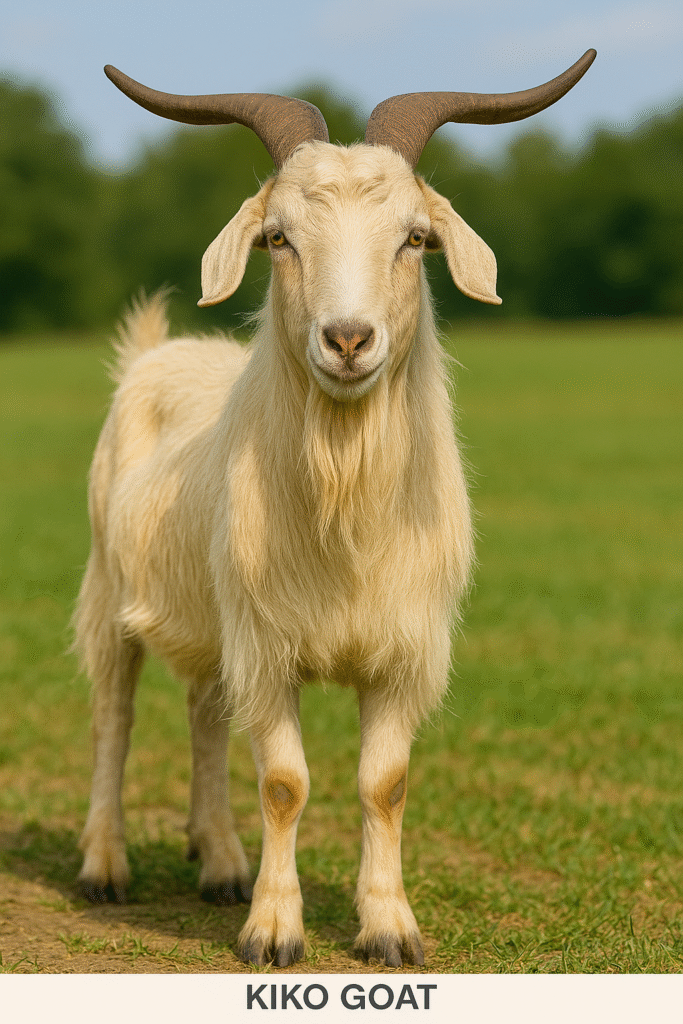
Now, imagine the rugged outdoorsman—the kind of person who thrives on little and keeps going no matter what. That’s the Kiko goat. Developed in New Zealand, Kikos were bred for hardiness, parasite resistance, and the ability to grow on scrubby land.
Unlike Boers, which need a bit of pampering, Kikos are low-maintenance. They don’t always grow as quickly, but they’re the kind of goat you can set loose on rough terrain and trust to fend for themselves.
Why you’ll love them:
- Tough, hardy, low maintenance.
- Resistant to common goat health issues.
- Great for large, unfenced or brushy areas.
Challenges:
- Meat yield is solid but not as high as Boers.
- Can be more independent and less friendly.
If you’re farming in rough country or want goats that won’t drain your wallet on feed and vet bills, Kikos may be your match.
The Spanish Goat: The Heritage Breed
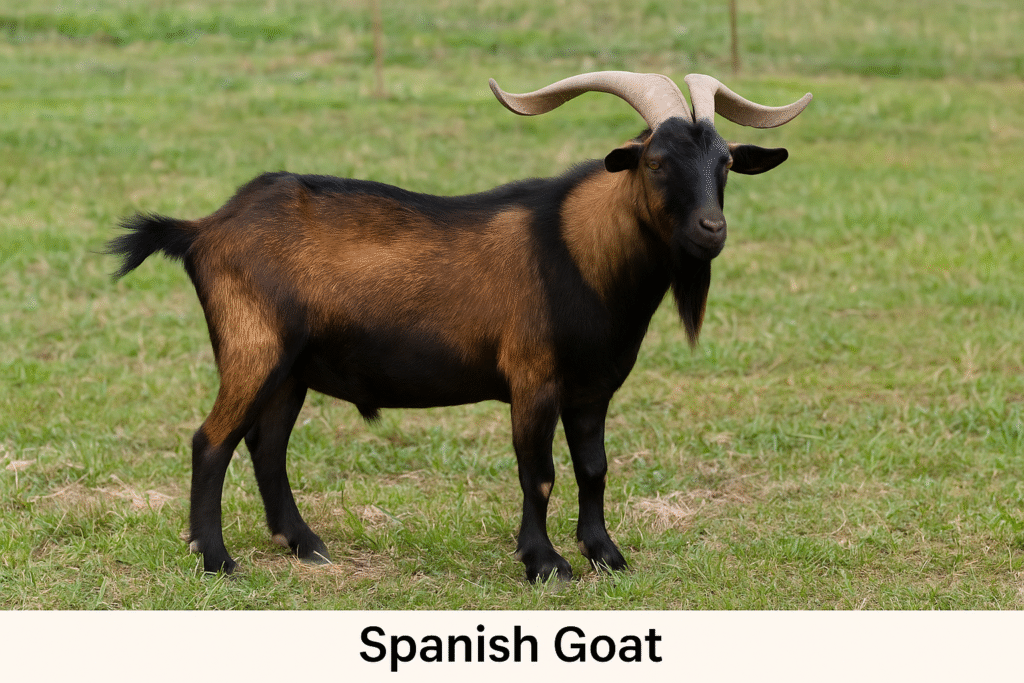
Next, picture the old cowboy at the fair—weathered, seasoned, and full of history. That’s the Spanish goat. Brought to the Americas by early explorers, these goats adapted over centuries to the varied landscapes of the southern United States.
They’re hardy and resourceful, much like Kikos, but they’re often a bit smaller and scrappier. Farmers appreciate them for clearing brush and surviving in tough conditions, though they’re not as meaty as Boers.
Why you’ll love them:
- Adaptable to nearly any climate.
- Heritage breed with strong survival instincts.
- Great for brush control.
Challenges:
- Smaller carcass size.
- Less common in some regions, so harder to source.
When it comes to meat goats, it’s really a question of priorities:
- Want maximum meat? Choose Boer.
- Want minimal fuss? Choose Kiko.
- Want history and adaptability? Choose Spanish.
The Dairy Queens
Now let’s wander over to the “goat café,” where the dairy breeds are serving up their specialties. Here, it’s all about milk—some breeds offering gallons a day, others offering small but rich batches perfect for cheese.
The Nubian: The Socialite
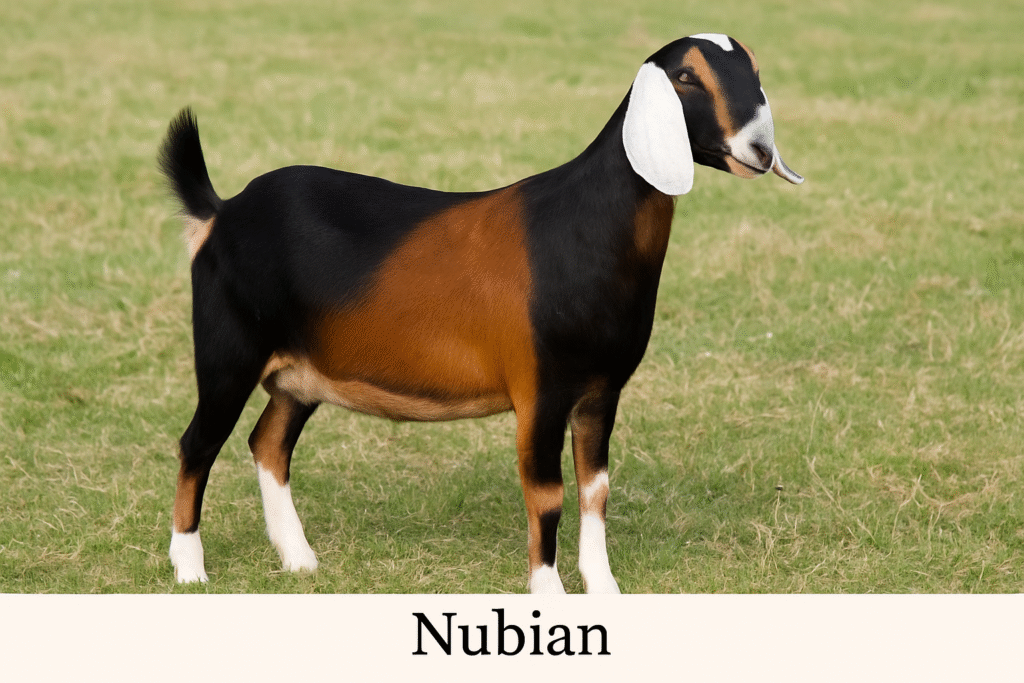
If you hear a loud, dramatic bleat across the fairgrounds, chances are it’s a Nubian goat. With their long floppy ears and Roman noses, Nubians are hard to miss. They’re friendly, affectionate, and… well, talkative.
Their milk is prized for its high butterfat content, making it ideal for cheese and rich dairy products. But be warned: your neighbors will definitely know you own a Nubian.
Why you’ll love them:
- Creamy, high-butterfat milk.
- Affectionate and sociable.
- Great for families who like interaction.
Challenges:
- Loud—may not suit urban areas.
- Lower volume of milk compared to Saanens.
The Saanen: The Quiet Producer
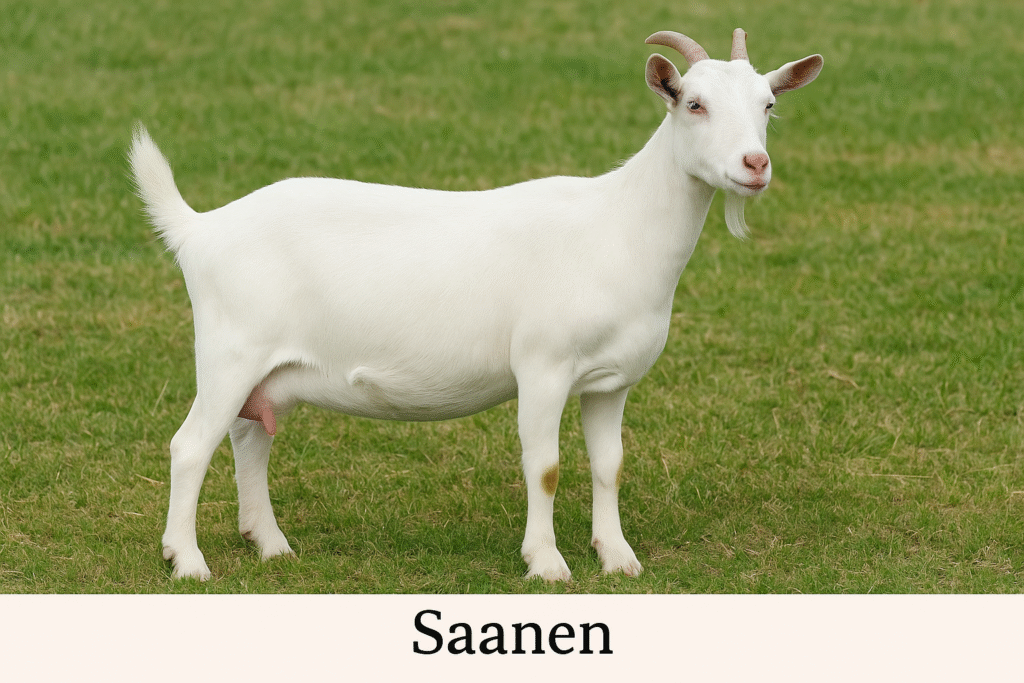
In contrast, the Saanen goat is the quiet worker of the group. Known as the “Holstein of dairy goats,” Saanens produce large volumes of milk—sometimes a gallon or more per day. They’re calm, gentle, and reliable.
They may not have the same butterfat richness as Nubians, but if your goal is sheer quantity, Saanens deliver.
Why you’ll love them:
- High milk production.
- Gentle, easygoing temperament.
- Excellent for beginners.
Challenges:
- Milk is lower in fat, less creamy.
- Need good feed to maintain output.
The Alpine: The Adventurer
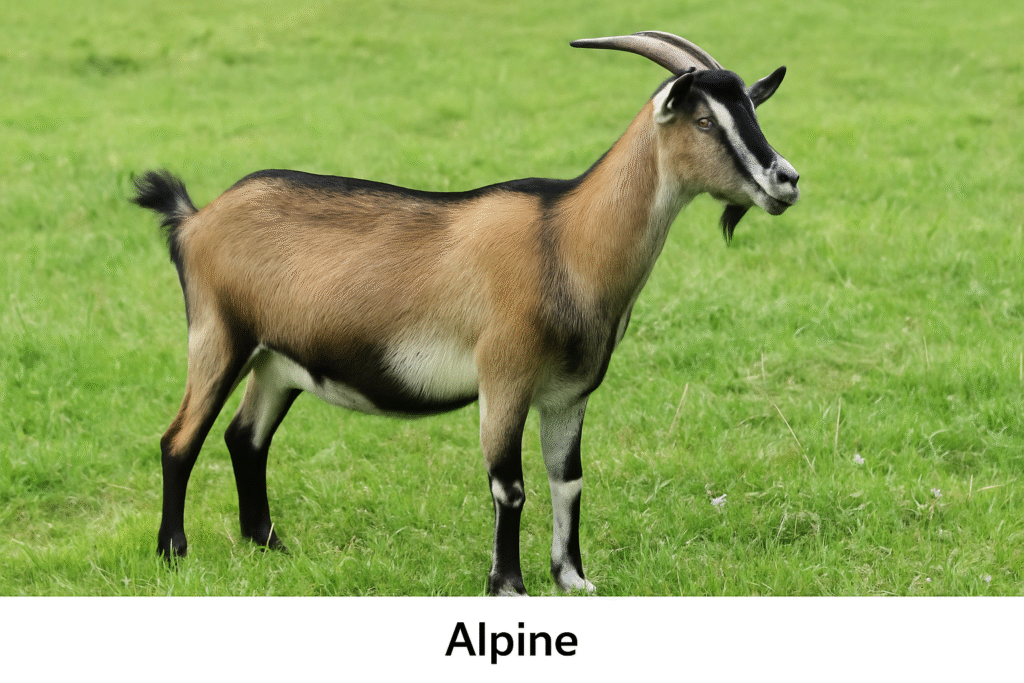
The Alpine goat is the all-rounder—adaptable, hardy, and productive. Originating in the Alps, they’re known for being strong, energetic, and excellent milkers.
Alpines are often recommended for beginners because they’re easy to find, versatile, and generally healthy.
Why you’ll love them:
- Good balance of volume and butterfat.
- Hardy in various climates.
- Excellent beginner goat.
Challenges:
- Can be strong-willed.
- Need secure fencing.
The Nigerian Dwarf: The Mini Marvel
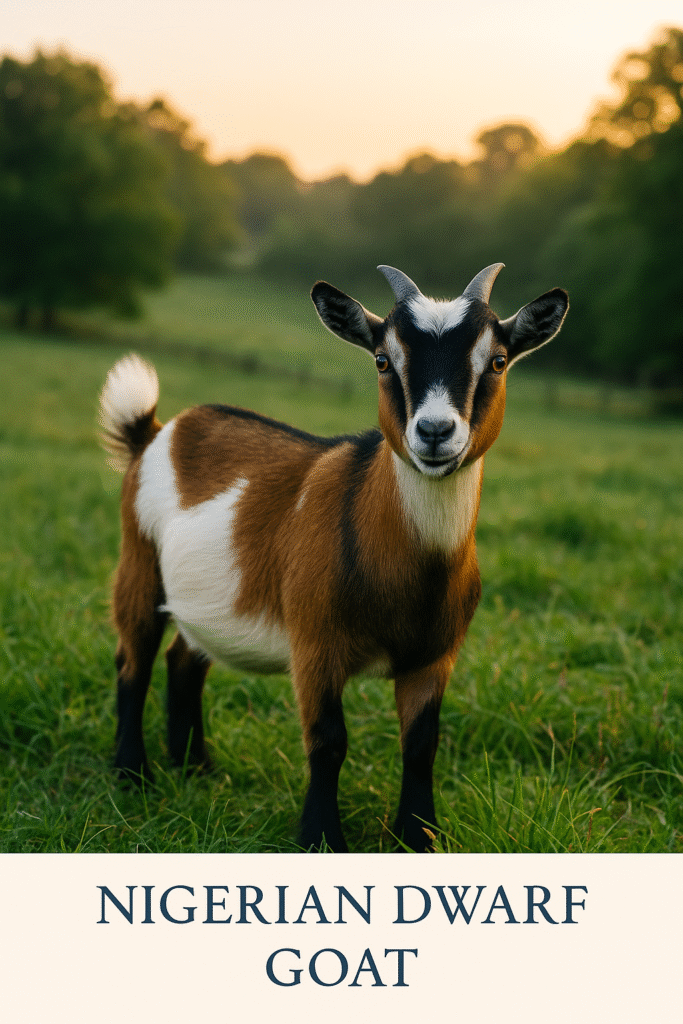
Now let’s shrink things down a little. The Nigerian Dwarf is the pocket-sized dairy goat, standing only about knee-high but producing surprisingly rich milk.
For urban families or those with limited space, Nigerian Dwarfs are a dream. They’re friendly, adorable, and their milk has butterfat levels comparable to Nubians.
Why you’ll love them:
- Compact size—great for backyards.
- High butterfat, sweet milk.
- Playful and affectionate.
Challenges:
- Small size means smaller volume of milk.
- Sometimes treated more as pets than production animals.
When it comes to dairy goats:
- Want rich milk? Go Nubian or Nigerian Dwarf.
- Want lots of milk? Go Saanen.
- Want balance and versatility? Go Alpine.
The Fiber Artists
Now picture a craft market, where stalls are filled with yarn, scarves, and sweaters. That’s where the fiber goats come in—producing coats that can be spun into luxury textiles.
The Angora: The Silky Showstopper

Angora goats produce mohair, a long, lustrous fiber prized in the fashion world. They look like walking clouds, with curls of woolly fiber covering them.
But beauty comes with upkeep. Angoras require regular shearing, careful parasite control, and good nutrition.
Why you’ll love them:
- Beautiful mohair fiber.
- Gentle temperament.
- Ideal for fiber enthusiasts.
Challenges:
- High maintenance.
- Susceptible to parasites and weather stress.
The Cashmere: The Elegant Dual-Purpose
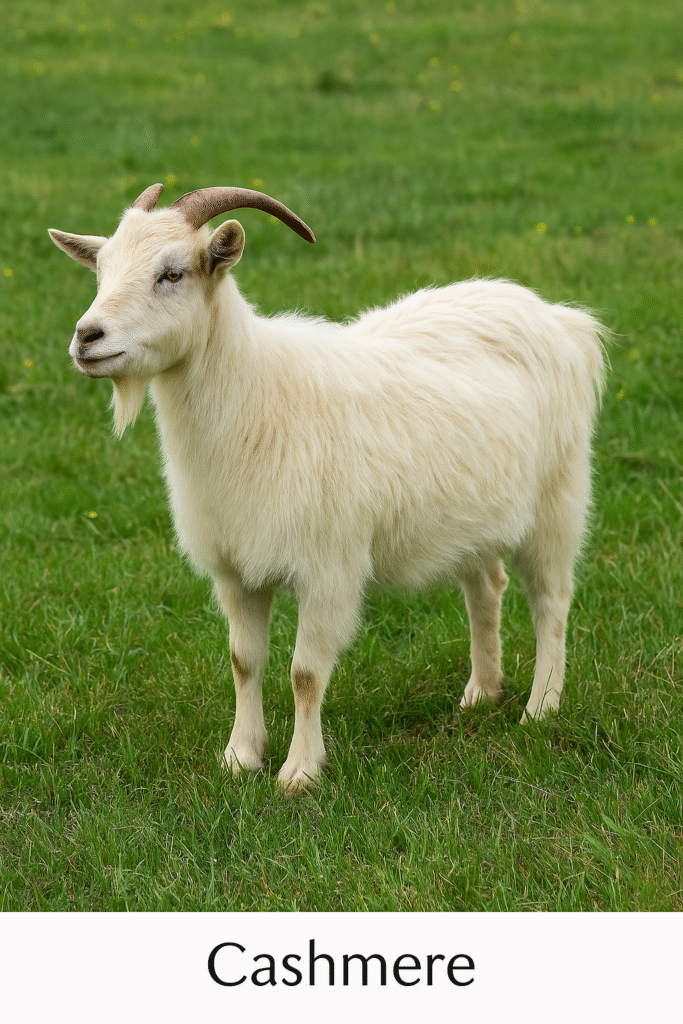
While not a specific breed, Cashmere goats are those that grow the soft undercoat used for luxury cashmere wool. Many meat breeds can produce cashmere, but specialized lines are raised for higher quality.
Why you’ll love them:
- Soft, valuable fiber.
- Can double as meat animals.
Challenges:
- Labor-intensive to harvest.
- Not as widely available.
The Pygora: The Hobbyist’s Delight
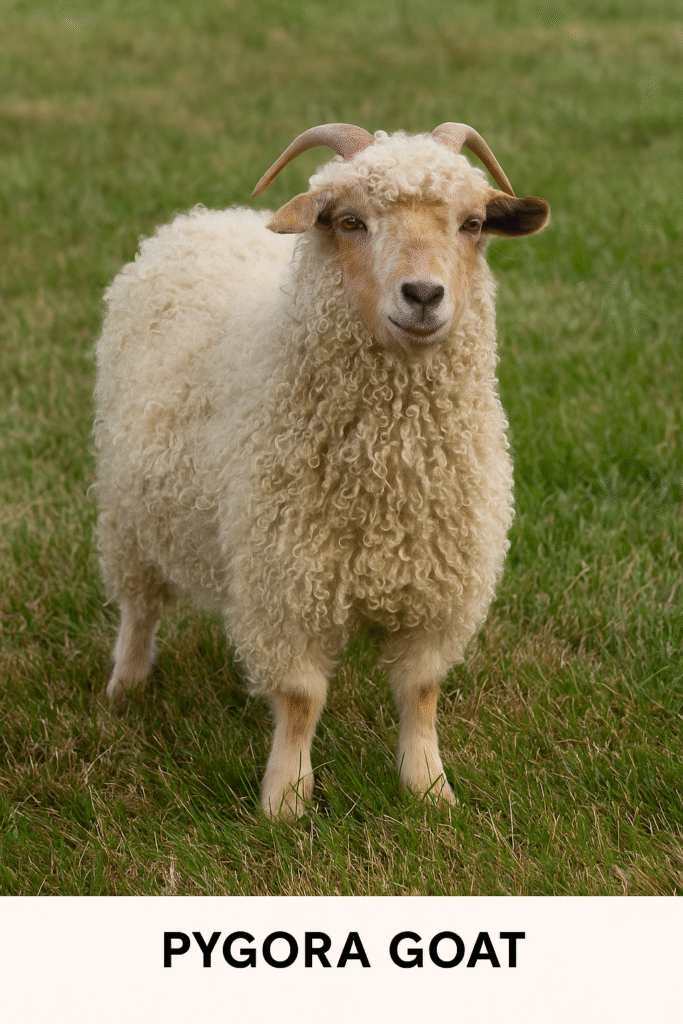
A cross between Pygmies and Angoras, the Pygora goat is a small, friendly fiber producer. Perfect for hobby farms, they offer manageable size and soft, spinnable fiber.
Why you’ll love them:
- Small, easy to handle.
- Fun mix of pet and fiber animal.
Challenges:
- Fiber quality varies.
- Availability may be limited.
The Companions
Finally, let’s meet the goats that might never fill a cheese press or spin wheel but will fill your yard with laughter.
The Pygmy: The Entertainer
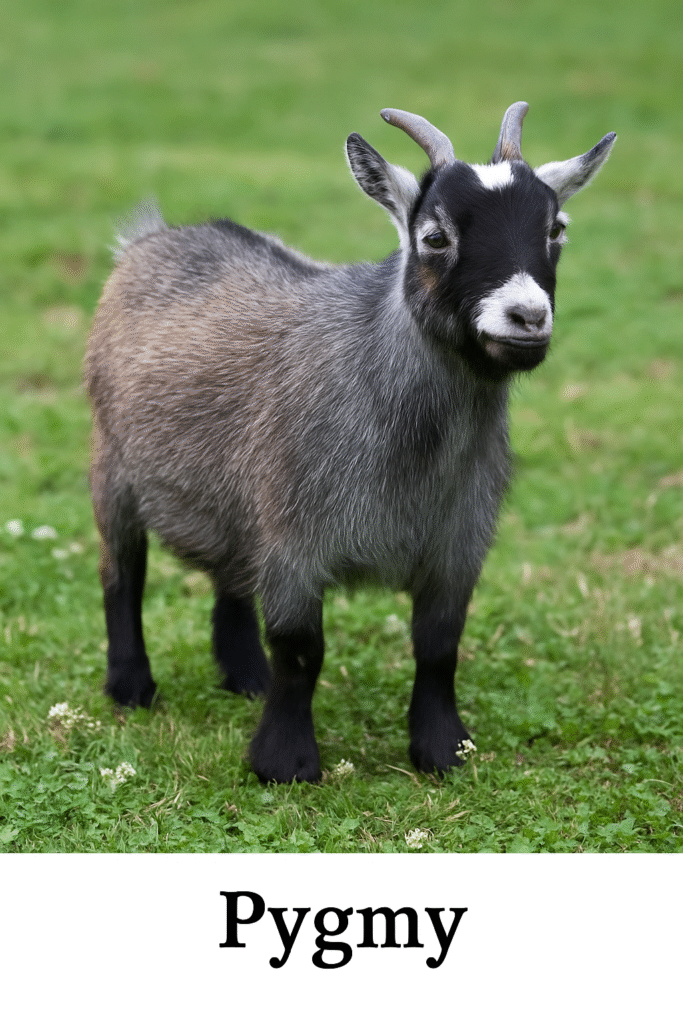
Pygmy goats are the clowns of the goat world. Compact, sturdy, and full of energy, they’re more pet than production animal. Families love them for their playful antics, and kids (both human and goat) can spend hours together.
Nigerian Dwarfs (again)
We’ve already met them in the dairy section, but Nigerian Dwarfs also shine as pets. Their small size and friendly nature make them favorites in urban settings.
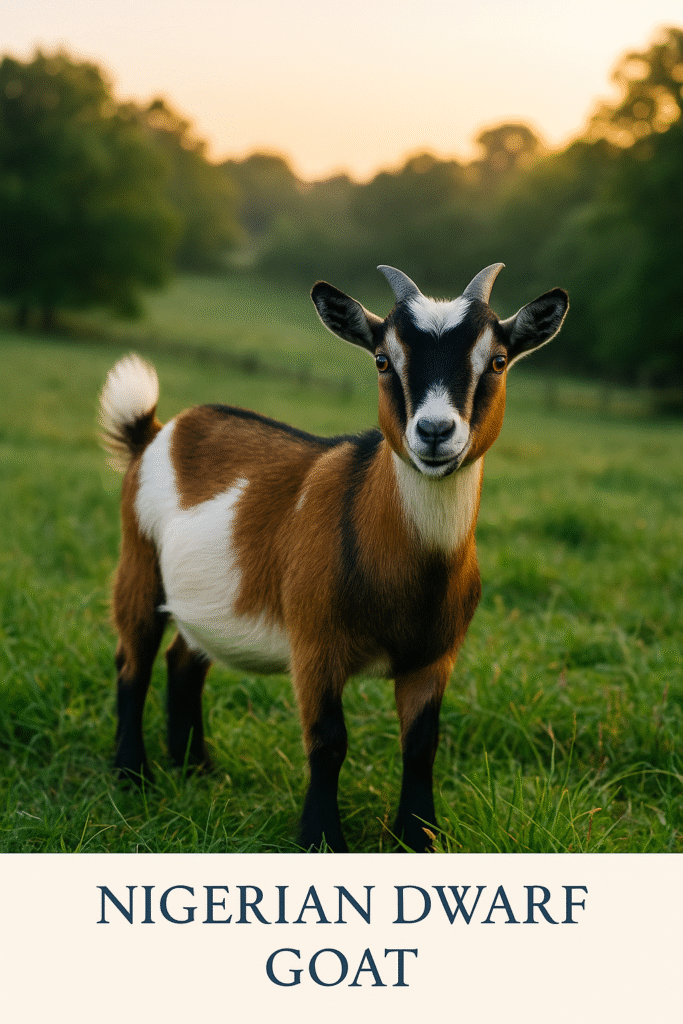
Urban vs. Rural Goat Stories
Here’s where reality checks in. If you’re in an urban area, you may face restrictions on livestock. Small breeds like Nigerian Dwarfs and Pygmies are usually the best bet, but even then, check local ordinances. Noise can be an issue—your neighbors may not love a Nubian’s operatic bleats.
Rural keepers, on the other hand, can let goats stretch their legs. Larger meat and dairy breeds thrive here, with fewer worries about noise complaints. But rural goats also face predators, requiring secure fencing and protection.
The Big Question: Which Goat Is Right for You?
So, which goat fits your story? Let’s imagine a few scenarios:
- The Urban Family Dreamer: Small yard, kids at home, a taste for fresh milk. → Nigerian Dwarf.
- The Craft Enthusiast: Loves knitting and spinning. → Angora or Pygora.
- The Rugged Farmer: Wants low-maintenance meat animals. → Kiko or Spanish.
- The Homesteader: Looking for gallons of milk and a gentle temperament. → Saanen or Alpine.
- The Entertainer: Wants playful pets with personality. → Pygmy goats.
Caring for Your Herd
No matter which goats you choose, remember: they’re a commitment. They need secure fencing (goats are escape artists). They need proper nutrition (hay, minerals, and supplements—not just weeds). They need health care (worming, hoof trimming, and sometimes vet visits).
But the reward? Laughter, fresh milk, cozy fiber, and meat if that’s your goal. More than that, goats have a way of becoming part of your story—their mischief, their bleats, their soft noses nudging your hand.
Closing Thoughts
At the end of the day, choosing a goat breed isn’t just about production numbers. It’s about how that goat fits into your life—your land, your family, your goals.
Some goats are athletes, some are artisans, some are comedians. All of them have the power to bring joy, challenge, and a new rhythm to your days.
So, which goat is right for you? The answer isn’t in the breed chart alone—it’s in the life you’re building, the story you’re writing, and the adventures you’re ready to embrace.
